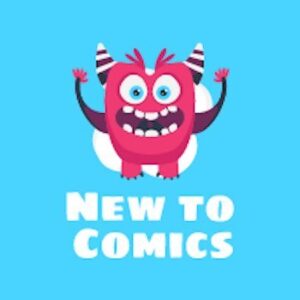***Contains Spoilers***
The Titans (1999) series starts with the aftermath of the JLA/Titans special, where Cyborg’s attack on the moon reunites the original Titans team. This new series centers on their efforts to rebuild their legacy while juggling the messy challenges of adulthood. Led by Nightwing, the core lineup features Troia, Flash, Arsenal, and Tempest, with Cyborg, Starfire, Argent, Jesse Quick, and Damage rounding out the roster. Their first major villain is Damien Darhk, but the series quickly transitions to exploring personal struggles and team dynamics rather than epic battles. Eventually, some members—Flash, Damage, Cyborg, and Starfire—leave the team, and the debut of Titans L.A. hints at a more expansive universe of possibilities.
What I enjoyed most about this series was how deeply it leaned into the personal lives of its characters. It felt refreshingly honest to see these heroes in their 20s struggling with responsibilities and drifting apart despite their best intentions. Dick is stretched thin between Blüdhaven and his leadership role, Garth grapples with being a husband and father, and Roy’s commitment to his daughter Liam underscores his growth. The relationships, both romantic and platonic, are the series’ heart. One standout moment for me was Wally West (Flash) telling Jesse Quick, “It’s not about who the team needs. It’s about who needs the team.” That line perfectly encapsulates why I love the Titans: they’re not just a team—they’re a family. Even when the action scenes fell flat, the quieter moments of camaraderie kept me hooked.
That said, there are parts of the series that didn’t work for me. The overarching plots—like Damien Darhk’s schemes—were forgettable, with the villains feeling more like placeholders than real threats. The departures of Damage, Starfire, Wally, and Cyborg midway through were also disappointing, especially since their reasons for leaving were so rushed. Damage’s storyline about coping with his abusive childhood felt underdeveloped.

Similarly, Starfire’s decision to leave for Tamaran again felt redundant, and Wally’s departure—essentially admitting he only rejoined to keep an eye on Dick—felt abrupt, though true to his character. While Cyborg’s upgrade to a new body was cool, his role in the series felt diminished afterward. Lastly, the debut of Titans L.A. was underwhelming, with Beast Boy, Firebird, and Cyborg forming a team that seemed more like a side note than a meaningful expansion of the Titans mythos.
In the end, the Titans (1999) series is more about relationships than super heroics, and that’s where it shines. The characters’ struggles to stay connected despite their growing pains feel genuine and relatable, even if the overall storylines lack impact. While it doesn’t hit the highs of earlier Titans runs, it’s a heartfelt look at the messiness of adult friendships and why they’re worth fighting for. I give it 3 stars: I liked it and plan to revisit it because I love the Titans, but it’s not something I’d recommend to a new fan looking for a definitive Titans story.
Feature Image The Titans #16 cover art by Todd Klein, T. Horie, and Phil Jimenez
Keep NewToComics.com running with a donation or shopping with through our affiliates—your support helps maintain the site and continue guiding new readers into the world of comics!


